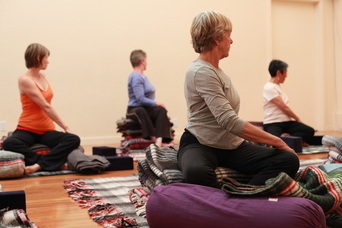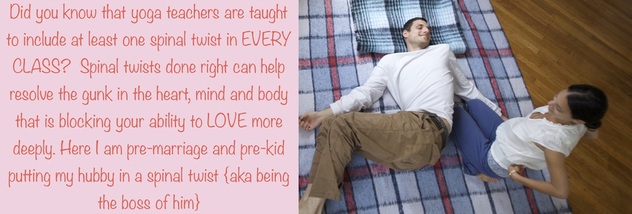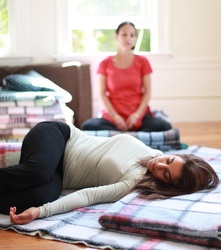|
In my classes they are often the first and last pose of a sequence, and one of the first things I have my private clients start doing in their home practice. Every yoga therapy session includes a twist, and I even encourage my students to do a "bed yoga" twist pose before going to sleep at night.  Spinal Twists are considered "bliss poses" because of the special effect on the mind, body and subtle body channels. A basic twists {like the seated twist shown in this photo} is the easiest and simplest pose for even the most newbie or physically limited yogi to achieve with the least effort and the MOST benefit. I have found over the years that even a twist done imperfectly gives amazing and immediate results. A Bit About Twists Types of TwistsYoga's spinal twists can...
More about the different effects of reclined, seated and standing āsana right here.
How & When to TwistIt is important in spinal twists to be well aligned, move slowly and consciously to ensure you are moving, releasing and twisting the "stuck" or tight areas, called granthis {means knots in Sanskrit}. These include the pelvis, heart region or thorasic spine, and the base of the skull. Simultaneously, you want to be sure not to OVER-TWIST and "spring a leak" in already hypermobile areas of your spine - these are the neck and waist. Details about this in my classes and workshops on twists. But here are two tricks... {1} twist your neck LAST, and {2} don't arch your waist.
{Sequencing geek? join my colleagues and me on this blog tour all about sequencing!}
How to do this reclined spinal twist...
TIME – 2-6 minutes per side Are you twisting in to bliss?
|
AuthorYoga Therapist, Ayurvedic Practitioner & Mama - these articles are to support your yoga practice with knowledge and inspiration. Categories
All
|


 RSS Feed
RSS Feed